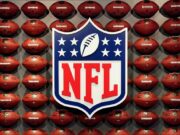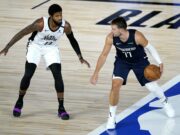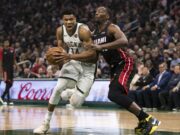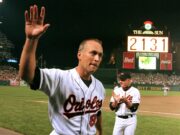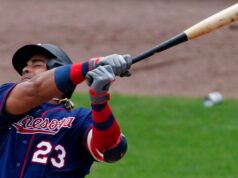
The Toronto Blue Jays sent a clear message to all of major league baseball this past Tuesday evening with their signing of free agent outfielder George Springer to a six-year/$150 million deal. The transaction provides with Jays with a bonified All-Star who transforms a young Blue Jays team into a legitimate postseason contender. Coming off of a season in which he hit fourteen home runs in only 189 at-bats while also lowering his strikeout rate (one of the few blemishes to his game) to a career-low 17.1%, Springer parlayed his performance into the off-season’s largest contract to date. Yet, despite those gaudy numbers as well as his superlative performances in postseasons past, baseball history informs us of one thing: the Toronto Blue Jays made a mistake in inking George Springer to a six-year deal and will regret this contract for years to come.
With any acquisition, it’s important to approach the transaction with an open mind and to consider both the pros and cons of the move. There are essentially two ways to think about the George Springer signing, one positive and one negative, and they are as follows:
Argument #1: George Springer is an impact player.
The Blue Jays get their guy.
Toronto and OF George Springer have agreed to a 6-year, $150M deal, per MLB Network’s @JonHeyman. pic.twitter.com/12HiVmk9ks
— MLB (@MLB) January 20, 2021
Argument #1 hinges on one thing: the short-term return. Let’s be clear, the Toronto Blue Jays just acquired a stud who is in the prime of his athletic career. He brings a five-tool skillset to the outfield and is a legitimate difference maker at the top of the lineup. Don’t believe me? Take a look for yourselves:
For you sabermetrics fans out there, many of the underlying numbers support what our eyes tell us about who George Springer is as a player. Spurring Springer’s eye-popping power output in 2020 was the fact that he elevated his launch angle (the angle at which the ball leaves the bat upon contact) to a career high 18.3 degrees. He has always hit the ball hard; now that he’s hitting it at a higher trajectory, it makes sense that we’ve seen a bump in his power production. Add in the fact that Springer has almost always placed in the top twenty percent of all MLB players in his sprint speed metric and that he has consistently been an above average defender, you begin to get a pretty clear picture of the type of impact a player like Springer can have on any given night.
At the plate, on the bases, in the outfield: the former UConn Huskie can flat out play. By all accounts, the Blue Jays are well within their rights to deem Springer as “their guy”. Springer was instrumental in helping turn the Houston Astros from perennial cellar dwellers to World Series champions. Why wouldn’t you break the bank for a player like that? Well…
Argument #2: Look to the Past
Position players to sign a $100M free agent contract at 31 or older:
George Springer (Blue Jays)
Yoenis Cespedes (Mets)
Robinson Cano (Mariners)
Shin-Soo Choo (Rangers)
Josh Hamilton (Angels)
Albert Pujols (Angels)
Jayson Werth (Nationals)
Alex Rodriguez (Yankees)😬
— Paul Hembekides (@PaulHembo) January 20, 2021
Notice a common trend here? Each of these players rode tremendous track records to market breaking deals only to see their value drastically decrease within the next two to three years.
Yoenis Cespedes absolutely raked in 2016 for the New York Mets, hitting .280 with 31 home runs in just 132 games. After opting out of his contract, Cespedes re-upped with the Mets for four years at $110 million. What did the Mets get out of this contract? 2.3 WAR. Yoenis Cespedes contributed just about two wins more than a AAA-replacement level player over the course of his four-year deal. Let’s see…that’s a cost of $47.8 million per win. Yikes.
How about Robinson Cano’s 2014, 10-year, $240 million deal? Well, things started out well with Cano hitting .294 over the first four years of the contract and, despite seeing a drop in his power, was still a consistent hitter in the same vein as he had been in New York with the Yankees. But consider this: Robinson Cano is currently serving a 162-game suspension for the 2021 season for PED use and the Mets still have to pay him $48 million over the 2022-2023 seasons…which Robinson Cano will play at the ripe old ages of 39 and 40. Oh, and the last time he played a full season was 2017. So, again, yikes.
On December 13th, 2012, Josh Hamilton inked a five-year/$125 million deal with the Los Angeles Angels of Anaheim. And then, well…let’s just say that things didn’t work out. Hamilton lasted barely two seasons in L.A., suffering through a string of injuries and a highly publicized drug relapse before being traded back to the Texas Rangers. Less than three full calendar years after signing that mega-deal with the Angels, Hamilton’s career went out with a whimper, as he hit .253 and struck out in nearly a third of his at-bats in his final season in the majors.
A year before Josh Hamilton began his ill-fated tenure with the Angels, Los Angeles dropped $254 million on thirty-two-year-old free agent (and future first ballot Hall of Famer) Albert Pujols. In nine seasons with the Angels, Pujols has never once resembled the player he was in St. Louis, struggling to replicate the consistent approach at the plate that defined his time with the Cardinals and he’s seen nagging injuries to his ankles and heels sap him of all his speed (seriously, all of it). At this point, he’s nothing more than a platoon option at DH. A platoon option, mind you, that will cost the Angels $30 million for the 2021 season.
Jayson Werth stayed in the NL East when he signed a seven-year, $126 million deal with the Washington Nationals prior to the 2011 season after a great stretch with the Philadelphia Phillies. To be honest, it’s probably for the best that the Phillies didn’t resign him; over the course of his seven-year deal with the Nats, Werth posted four years with a sub-.245 batting average and his last three season’s worth of production from 2015-2017 amounted to a combined 0.9 WAR. $62 million for someone who wasn’t even worth a full win over a replacement-level player for three seasons.
In 2007, Alex Rodriguez reworked his contract to the tune of 10-years, $275 million. On the surface, his production seemed to hold steady for the first few years of the deal, but the slightest exploration of his stat line yielded some telling trends: a declining slugging percentage, a body that could no longer handle the physical demands of third base, a plummeting on-base-percentage. Over the back eight years of his contract, he produced 8.7 combined WAR…for a price tag of $176.8 million.
In Conclusion…
In all likelihood, George Springer is going to be great for probably two to three more seasons. He’ll headline a surging Toronto team that will make the playoffs and challenge for a divisional crown. It’s going to seem like the Blue Jays made a smart investment by signing him. And, hell, who knows? Maybe George Springer defies the baseball gods and justifies this contract by playing well for the next six years.
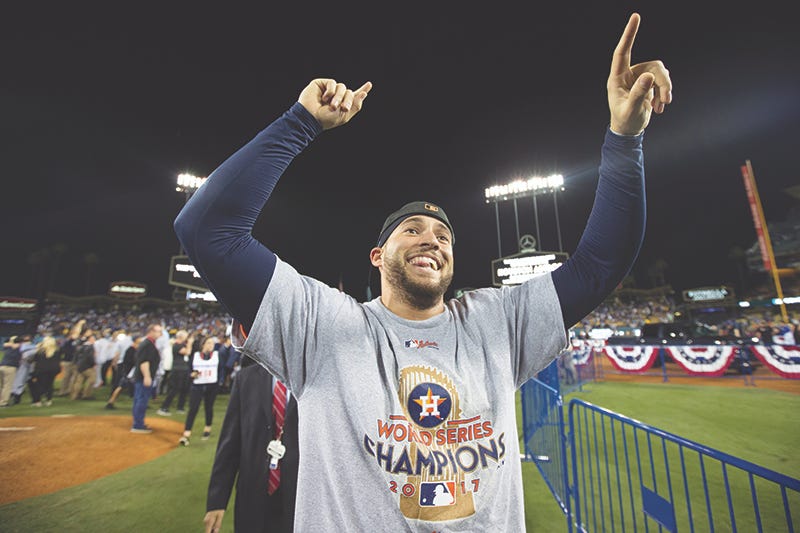
Is that likely to happen? No, it isn’t. Come 2024 and 2025, guys like Teoscar Hernandez, Lourdes Gurriel, and Danny Jansen will become free agents. Joining them will be cornerstones Cavan Biggio, Vladimir Guerrero Jr., and Bo Bichette after that. The Blue Jays aren’t made of money; they’ve been middle of the pack in fan attendance for two decades now. They aren’t the type of franchise that will shill out megadeal upon megadeal. Retaining this core of players who will be hitting the open market in their late 20s, in the primes of their careers, will be nearly impossible. George Springer will be 37 and earning $25 million in the last year of his deal at that point. Do we really think he’ll be justifying that type of payday? At the expense of resigning a Vladimir Guerrero Jr. or Bo Bichette or Cavan Biggio?
A three to four-year deal would’ve been much more cost effective for the Blue Jays, even if they would’ve had to pay a higher yearly average salary. They would’ve been able to take advantage of the best years remaining of his career while maintaining financial flexibility to retain their core unit in the future. At this point, if history has taught us anything, it’s that high money, long-term deals to older ballplayers JUST. DON’T. WORK. The Blue Jays will ultimately regret signing George Springer to a six-year deal and the fallout from this contract will be evident in 2024 and beyond.


